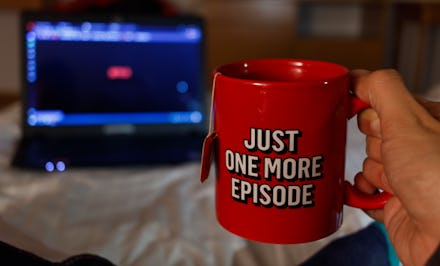Who watches Netflix at 1.5x speed, and why?

Netflix is testing out a feature of its mobile app that lets people speed up or slow down videos, and while many subscribers seem excited about the prospect of streaming Friends (for a few more months at least) 0.5x, 0.75x, 1.0x, 1.25x or 1.5x faster, Hollywood creatives are incensed.
Judd Apatow tweeted at the streaming giant, “Don’t f— with our timing. We give you nice things. Leave them as they were intended to be seen.” Brad Bird, creator of The Incredibles, called the feature a “spectacularly bad idea” and another blow to the “already bleeding-out cinema experience."
"Why support and finance filmmakers visions on one hand, then work to destroy the presentation of those films on the other?” he tweeted. Actor Aaron Paul, director Peter Ramsey (Spider-Man: Into the Spider-Verse), and director Peyton Reed (Ant-Man) all chimed in, too.
Variable playback speeds have been a feature on DVD, VHS, and CD players for decades, and they’re standard on a lot of streaming video and podcast platforms. Some listeners use the feature to binge content more quickly. Others slow down playback while learning a language to help with comprehension.
Netflix defended itself in a statement, asserting that it’s working to optimize the viewing experience. “We’re always experimenting with new ways to help members use Netflix,” it read. To assuage filmmakers’ fears, the company pointed out that it’s only testing the feature on mobile devices rather than larger TVs. The speed controls automatically correct pitch at different speeds, so dialogue won’t sound chipmunk-like. And playback speed defaults to normal from video to video, so a user doesn’t get stuck watching videos faster or slower by accident. “We have no plans to roll any of these tests out in the short term. And whether we introduce these features for everyone at some point will depend on the feedback we receive,” Netflix added.
Netflix’s relationship with Hollywood is rather fraught at the moment. Movie theater owners object to the streaming platform’s practice of releasing its films in cinemas for a short window to qualify for awards. Filmmakers worry that the streaming service undercutting cinemas will further devalue the experience of seeing a movie on the big screen.
The streaming era, however, has ushered in a glut of things to watch — and the vast majority of it isn’t prestige entertainment. When a buzzy series drops, there can be a lot of social pressure to binge it immediately to keep up with the cultural conversation. But the idea of spending 10 hours watching possibly-forgettable entertainment over the course of a weekend sits poorly with most people.
“Netflix [is] introducing an option to watch their shows at 1.5x speed so everyone can cram in more content when everyone really just wants Netflix to make every series 0.5x the length,” The Guardian’s media editor Jim Waterson tweeted.
Another Twitter user, Yvonne Shirley, noted variable speed playback can be a time-saver for people who get bored halfway through a movie or series but still want to know how it ends. “It's a feature I have used just to finish a movie I don't particularly enjoy, but still wanted to find out what happened,” she tweeted.
What creators mostly object to is the fact that variable playback screws with a director’s artistic decisions about pacing, cinematography, and most other elements of a project outside of plot. It’s an argument that makes sense if you’re talking about meticulously-crafted entertainment. But when you consider the glut of subpar movies and TV shows being marketed to audiences these days, you can’t get that mad at a consumption hack that empowers people to reclaim some of their precious time.
It’s ultimately up to viewers to decide how they want to watch things. Research shows there’s not a ton of crossover between people who opt to see a film in theaters versus watch it at home. That probably holds true for those who’d find utility in variable playback and those who may not. A Stranger Things fan probably wouldn’t watch the show sped-up (at least not during a first viewing) because they’d want to savor the experience and watch it as intended.
On the other hand, using variable playback to breeze through 17 seasons of Keeping Up with the Kardashians in half the time sounds like an inspired life hack. To each their own.